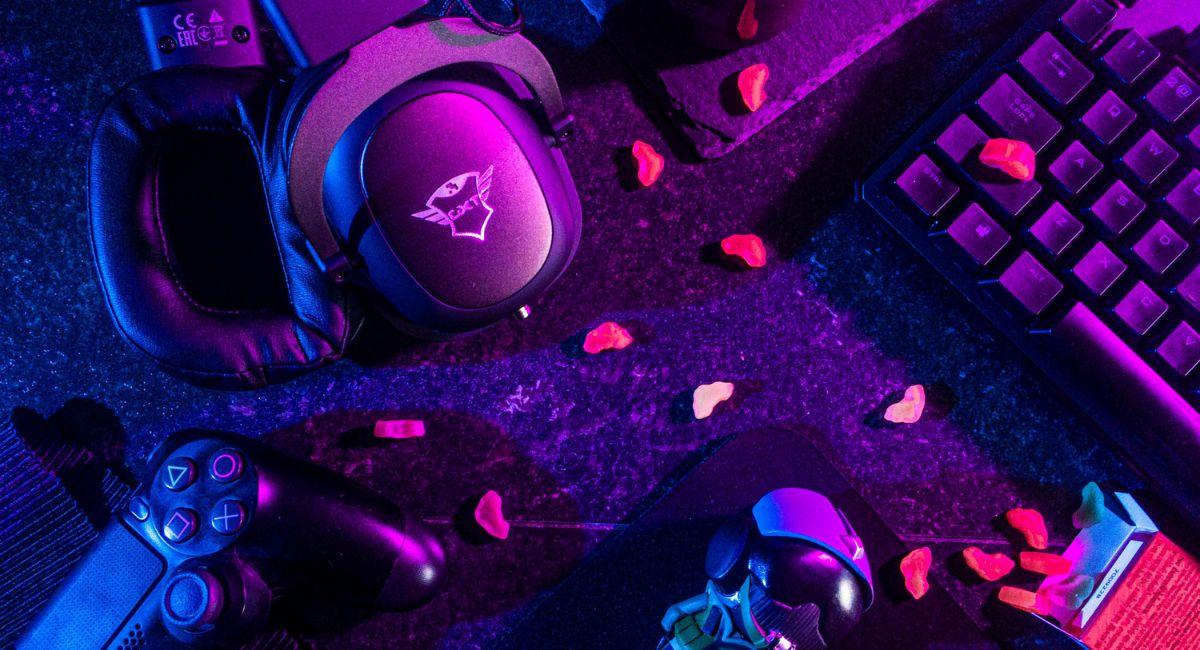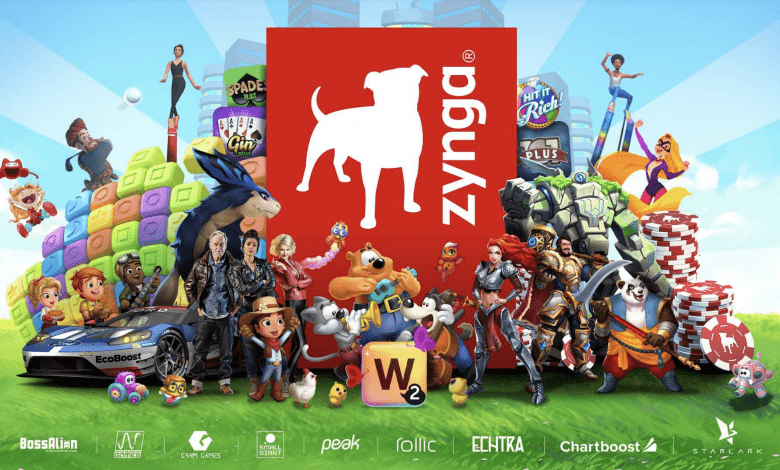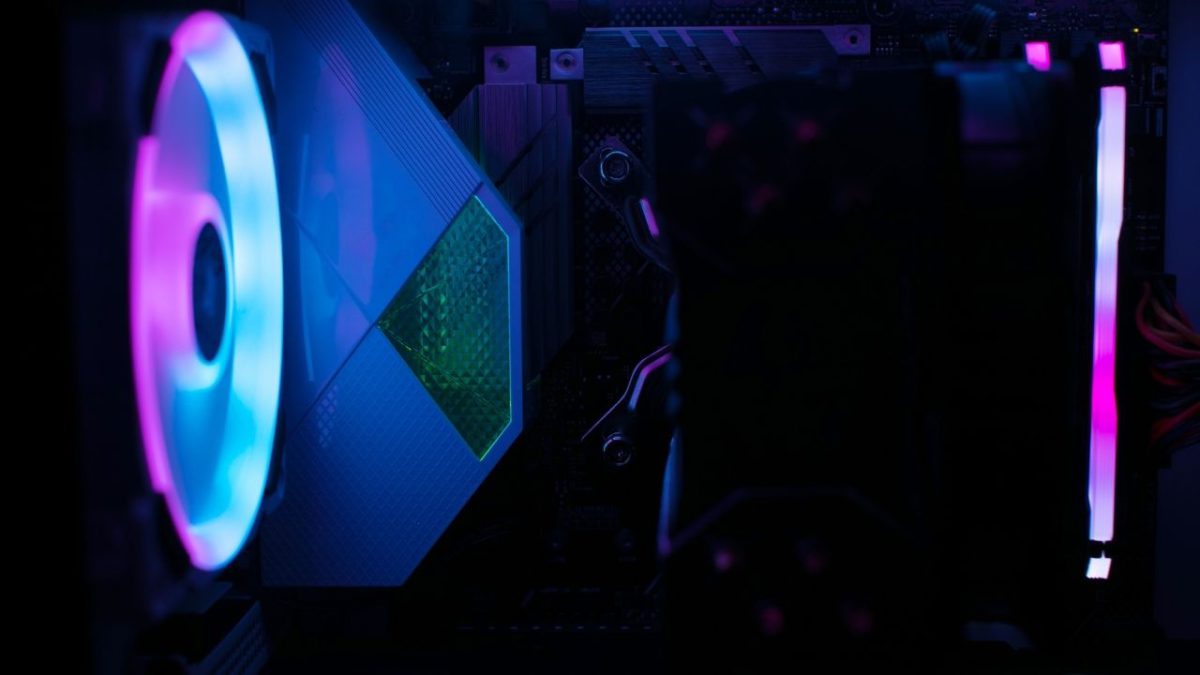Exploring Amazing Layer 2 Solutions for Blockchain Gaming For Enhanced Performance And Scalability
Layer 2 (L2) solutions in blockchain gaming refer to secondary protocols or frameworks designed to mitigate scalability challenges associated with the main blockchain layer (Layer 1). As blockchain networks strive to balance scalability, security, and decentralization, Layer 2 addresses these concerns by moving certain processes “off-chain.” State channels, a common Layer 2 solution, allow participants to conduct multiple transactions off-chain and settle only the outcome on the main blockchain. Payment channels, a specific type of state channel, facilitate frequent and small transactions, reducing congestion and costs.
Other solutions like Plasma, sidechains, and Rollups offer alternatives by creating parallel chains or optimizing transaction processing through batch submissions or assumed validity. These Layer 2 approaches enhance the overall efficiency and throughput of blockchain networks, making them more scalable and cost-effective for a variety of applications. By leveraging these solutions, blockchain platforms can accommodate a higher transaction volume without compromising the security and decentralization principles inherent in the underlying technology.
The integration of Layer 2 solutions in blockchain gaming has several advantages. First and foremost is scalability. By processing a large number of transactions off-chain, Layer 2 solutions alleviate the congestion on the main blockchain, enabling gaming platforms to scale more effectively and accommodate a larger user base.
Also, read- Top 10 Blockchain Gaming Trends In 2024 That Will Set The Trajectory For The Future
Layer 2 Solutions for Blockchain Gaming
Layer 2 solutions play a crucial role in addressing scalability issues in blockchain gaming, where high transaction throughput, low latency, and cost-effectiveness are essential for a seamless user experience. Here are some Layer 2 solutions tailored for blockchain gaming:
- State Channels:
- Real-Time Interaction: State channels enable off-chain transactions between players, allowing them to engage in real-time interactions without the need for on-chain settlements. This is beneficial for in-game microtransactions, such as buying or selling in-game items.
- Sidechains:
- Scalable Game Environments: Sidechains provide a separate blockchain parallel to the main network, allowing for the creation of scalable game environments. Games can run on sidechains, leveraging their own consensus mechanisms and reducing the burden on the main chain.
- Plasma:
- Secure Asset Ownership: Plasma chains can be utilized to represent in-game assets, ensuring secure ownership on a separate blockchain while periodically anchoring data to the main chain. This enhances the security of in-game items and minimizes the load on the main blockchain.
- Rollups:
- Batch Processing of Transactions: Rollups can be employed to batch process numerous in-game transactions off-chain and then submit a summary to the main blockchain. This approach helps manage the high frequency of transactions in gaming environments.
- Optimistic Rollups:
- Fast and Low-Cost Transactions: Optimistic Rollups assume the validity of transactions, allowing for fast and cost-effective processing. This is particularly useful for blockchain gaming where players often engage in quick and frequent transactions.
- Zero-Knowledge Rollups:
- Enhanced Privacy: Zero-Knowledge Rollups offer enhanced privacy features, allowing players to engage in transactions with greater confidentiality. This can be beneficial for protecting sensitive in-game data and transactions.
- Immutable Asset Ownership:
- Blockchain-based Asset Ownership: Leveraging Layer 2 solutions ensures that in-game assets are securely owned on the blockchain. This not only prevents fraud but also enables players to have true ownership of their digital assets.
- Reduced Transaction Costs:
- Cost-Effective Microtransactions: Layer 2 solutions significantly reduce transaction costs, making it feasible for game developers to incorporate microtransactions within the game ecosystem without imposing high fees on players.
Exploring Layer 2 solutions for blockchain gaming
Exploring Layer 2 solutions for blockchain gaming is crucial for achieving enhanced performance and scalability, addressing the challenges posed by the inherent limitations of many blockchain networks. These solutions optimize the gaming experience by improving transaction throughput, reducing latency, and minimizing costs. Here’s an exploration of Layer 2 solutions tailored for blockchain gaming:
-
- State Channels:
- Real-time Interactions: State channels enable gamers to engage in real-time interactions and conduct numerous transactions off-chain. This is especially valuable for in-game actions, such as buying and selling items or executing quick in-game transactions without the delays associated with on-chain settlements.
- Sidechains:
- Scalable Game Environments: Sidechains provide dedicated, parallel blockchains where game logic and transactions can be executed independently. This scalability feature allows for the creation of expansive and complex in-game environments without overloading the main blockchain.
- Plasma:
- Secure Asset Ownership: Plasma frameworks support secure asset ownership by anchoring periodic data summaries to the main blockchain. This enhances the security and integrity of in-game assets while reducing the burden on the main chain, ensuring a seamless gaming experience.
- Rollups:
- Batch Transaction Processing: Rollups facilitate the batch processing of multiple in-game transactions off-chain, submitting a summary to the main blockchain. This optimizes transaction throughput, making it suitable for gaming environments with a high frequency of transactions.
- Optimistic Rollups:
- Fast and Low-Cost Transactions: Optimistic Rollups assume transaction validity by default, enabling fast and cost-effective transaction processing. This is particularly beneficial for blockchain gaming, where quick and frequent transactions are common.
- Zero-Knowledge Rollups:
- Enhanced Privacy: Zero-Knowledge Rollups enhance privacy by allowing players to engage in confidential transactions. This is valuable for protecting sensitive in-game data and ensuring a secure gaming experience.
- Immutable Asset Ownership:
- Blockchain-backed Asset Ownership: Leveraging Layer 2 solutions ensures that in-game assets are securely owned on the blockchain. This not only prevents fraud but also establishes true ownership of digital assets, fostering a sense of value and scarcity in the gaming ecosystem.
- Reduced Transaction Costs:
- Cost-Effective Microtransactions: Layer 2 solutions significantly reduce transaction costs, enabling game developers to implement microtransactions within the gaming ecosystem without imposing prohibitive fees on players.
- State Channels:
Good morning 🌞 Web3
— Avni8774 (@avni87744) January 22, 2024
Thread about #Web3Gaming
👇👇👇
1.Introduction
Web3 Gaming is revolutionizing the gaming world! Blockchain technology creates games that enable ownership and revenue for players. Let’s explore what this new era of gaming looks like. pic.twitter.com/adoltcRwgL
Top 10 Layer 2 Solutions for Blockchain Gaming: Unleashing the True Potential of Play-to-Earn
The meteoric rise of blockchain gaming has ignited a revolution in the industry. “Play-to-Earn” (P2E) models empower players to own in-game assets and earn rewards through gameplay, fostering a whole new level of engagement and economic participation. However, the underlying blockchain technology, particularly Layer 1 solutions like Ethereum, currently struggles with scalability limitations. These limitations manifest as high transaction fees, slow processing times, and network congestion, hindering the full potential of P2E gaming.
This is where Layer 2 solutions come in as game-changers (pun intended!). These innovative protocols operate on top of existing blockchains, handling transactions off-chain before periodically submitting them to the main chain for security purposes. The result? Faster transaction speeds, significantly lower fees, and a smoother gaming experience for everyone.
Here’s a deep dive into the top 10 Layer 2 solutions poised to revolutionize blockchain gaming:
1. Immutable X (IMX): Designed specifically for NFT gaming, IMX boasts impressive scalability with over 9,000 transactions per second (TPS). It integrates seamlessly with Ethereum, leveraging its security while offering near-instantaneous trades and gas-free minting for in-game assets. Games like Gods Unchained and Guild of Guardians have already adopted IMX, demonstrating its effectiveness in scaling P2E ecosystems.
2. Polygon (MATIC): This popular Layer 2 solution offers a high-throughput sidechain network compatible with the Ethereum Virtual Machine (EVM). Polygon boasts a blazing-fast speed of up to 65,000 TPS and significantly reduced transaction fees. Games like Aavegotchi and The Sandbox leverage Polygon’s scalability to deliver a frictionless gaming experience with low costs for players.
3. Arbitrum (ARB): Another EVM-compatible Layer 2 solution, Arbitrum prioritizes security by inheriting it directly from Ethereum. It offers optimistic rollups, a technology that allows for faster transaction processing while maintaining security through cryptographic proofs submitted to the main chain. Games like Mines of Dalarnia and Treasure Trove are built on Arbitrum, taking advantage of its secure and scalable infrastructure.
4. Optimism (OP): This Ethereum-based Layer 2 solution utilizes optimistic rollups similar to Arbitrum. Optimism focuses on developer experience, offering familiar tooling for building decentralized applications (dApps) with scalability benefits. Games like Sorare and Illuvium are being developed on Optimism, aiming to provide a robust and cost-effective platform for players and developers alike.
5. Starknet (STRK): Utilizing a different scaling technique called zk-rollups, Starknet achieves even faster transaction processing by generating cryptographic proofs that are much lighter weight than those used in optimistic rollups. This translates to potentially millions of TPS. While still under development, Immutable X is planning to leverage Starknet’s technology for future scalability advancements.
6. SKALE (SKL): This unique Layer 2 solution utilizes sidechains specifically designed for high-performance blockchain gaming. SKALE allows developers to create custom blockchains with configurable parameters, catering to the specific needs of their games. Games like CryptoBlades and Alien Worlds run on SKALE, demonstrating its flexibility and scalability for diverse P2E experiences.
7. Ronin (RON): Developed by Sky Mavis, the creators of the popular Axie Infinity game, Ronin is a sidechain specifically tailored for the Axie ecosystem. It offers fast transactions and low fees, enabling the smooth functioning of Axie’s breeding, battling, and marketplace features. While currently closed to other games, Ronin’s success in scaling Axie Infinity highlights the potential of custom Layer 2 solutions for individual gaming projects.
8. Celer Network (CELR): This Layer 2 solution utilizes a hybrid approach, combining off-chain transaction processing with state channels for specific use cases. Celer focuses on improving scalability for mobile games and dApps, aiming to provide a seamless user experience on mobile devices. Games like The Fabled Heroes and Upland are exploring Celer’s technology to enhance their mobile gaming functionalities.
9. Loopring (LRC): Primarily known for its decentralized exchange protocol, Loopring also offers Layer 2 scaling solutions with high throughput and low fees. Through zk-rollups, Loopring aims to provide a secure and scalable infrastructure for NFT trading and other blockchain gaming functionalities. While not yet widely adopted in the P2E space, Loopring’s technology has the potential to disrupt the in-game asset market.
10. Matter Labs (MATIC): This Layer 2 solution utilizes zk-rollups to achieve near-instantaneous transaction finality and minimal fees. While still under development, Matter Labs’ project, zkSync, has garnered significant interest for its potential to revolutionize scalability for DeFi and NFT applications within the gaming landscape. Games built on Matter Labs’ technology could offer a truly frictionless experience with instant transactions and negligible costs.
Beyond the Top 10: A Look at the Future
The Layer 2 landscape for blockchain gaming is constantly evolving. New solutions are emerging, and existing ones are undergoing continuous development. Some exciting trends to watch include:
- Interoperability: The ability for Layer 2 solutions to seamlessly connect with each other is crucial for fostering a unified and thriving P2E ecosystem. Interoperability projects like Cosmos and Polkadot are paving the way for a future where players can seamlessly move assets and participate in various P2E experiences across different Layer 2 environments.
- Focus on Developer Experience: As the developer base for blockchain games continues to grow, Layer 2 solutions that offer intuitive tooling and resource-efficient development environments will gain traction. This will accelerate the creation of innovative and engaging P2E experiences.
- Security and Decentralization: While scalability is essential, security and decentralization remain paramount for blockchain games. Layer 2 solutions will need to strike a balance between achieving high throughput and maintaining trustless, transparent ecosystems.
Conclusion
Layer 2 solutions are the key to unlocking the true potential of blockchain gaming. By addressing scalability limitations, these innovative protocols are paving the way for a future of faster, smoother, and more cost-effective P2E experiences. With a diverse range of Layer 2 solutions available and exciting developments on the horizon, the future of blockchain gaming is indeed bright. As a player or developer, stay tuned for the next wave of innovation that will redefine how we play, earn, and interact within the ever-expanding world of blockchain games.
Layer 2 (L2) solutions have emerged as transformative innovations in the blockchain gaming space, addressing scalability, cost, and user experience challenges that traditional blockchains face. These solutions, such as sidechains and state channels, have showcased their ability to significantly enhance the efficiency and speed of transactions while reducing the associated costs.
The implementation of Layer 2 scaling solutions in blockchain gaming has clear implications for the industry’s growth and adoption. By alleviating congestion on the main blockchain and offering near-instant transaction finality, L2 solutions pave the way for a more seamless and immersive gaming experience. Players can enjoy faster in-game transactions, lower fees, and an overall improved performance, fostering a more engaging and user-friendly environment.
The broader impact extends beyond gaming, influencing the adoption of blockchain technology in various sectors. The scalability solutions provided by Layer 2 contribute to the viability of blockchain applications in real-world scenarios, ranging from decentralized finance (DeFi) to supply chain management.
As the blockchain gaming space continues to evolve, the integration of Layer 2 solutions is likely to become more commonplace. The momentum gained by L2 solutions underscores the industry’s commitment to overcoming scalability challenges and creating a more sustainable and efficient blockchain gaming ecosystem.
Stay informed with daily updates from Blockchain Magazine on Google News. Click here to follow us and mark as favorite: [Blockchain Magazine on Google News].
Get Blockchain Insights In Inbox
Stay ahead of the curve with expert analysis and market updates.
latest from tech
Disclaimer: Any post shared by a third-party agency are sponsored and Blockchain Magazine has no views on any such posts. The views and opinions expressed in this post are those of the clients and do not necessarily reflect the official policy or position of Blockchain Magazine. The information provided in this post is for informational purposes only and should not be considered as financial, investment, or professional advice. Blockchain Magazine does not endorse or promote any specific products, services, or companies mentioned in this posts. Readers are encouraged to conduct their own research and consult with a qualified professional before making any financial decisions.

 Bitcoin
Bitcoin  Ethereum
Ethereum  Tether
Tether  XRP
XRP  Solana
Solana  Dogecoin
Dogecoin  USDC
USDC  Lido Staked Ether
Lido Staked Ether  Cardano
Cardano  TRON
TRON  Avalanche
Avalanche  Toncoin
Toncoin  Chainlink
Chainlink  Wrapped stETH
Wrapped stETH  Shiba Inu
Shiba Inu  Wrapped Bitcoin
Wrapped Bitcoin  Sui
Sui  Hedera
Hedera  Stellar
Stellar  Polkadot
Polkadot  WETH
WETH  Hyperliquid
Hyperliquid  Bitcoin Cash
Bitcoin Cash  LEO Token
LEO Token  Uniswap
Uniswap  Litecoin
Litecoin  Pepe
Pepe  Wrapped eETH
Wrapped eETH  NEAR Protocol
NEAR Protocol  Ethena USDe
Ethena USDe  USDS
USDS  Aave
Aave  Aptos
Aptos  Internet Computer
Internet Computer  Cronos
Cronos  POL (ex-MATIC)
POL (ex-MATIC)  Mantle
Mantle  Ethereum Classic
Ethereum Classic  Render
Render  WhiteBIT Coin
WhiteBIT Coin  Dai
Dai  Monero
Monero  MANTRA
MANTRA  Bittensor
Bittensor  Artificial Superintelligence Alliance
Artificial Superintelligence Alliance  Arbitrum
Arbitrum  Filecoin
Filecoin 


